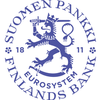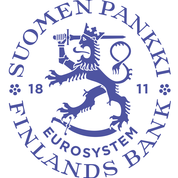Coronavirus pandemic demonstrates necessity of risk buffers

The European Central Bank and national authorities have introduced extensive measures to guarantee the liquidity of the financial markets and to secure funding for firms. Government has mitigated the business sector's cash flow crisis with direct subsidies and by increasing the provision of collateral. Finnish banks have increased their lending to firms and eased the debt-servicing duties of their customers with amortisation-free periods. ‘Society’s ability to weather crisis is being deeply tested by the coronavirus pandemic. In spite of the relief measures put in place, the human and economic toll of the pandemic will prove significant,’ stated Bank of Finland Deputy Governor Marja Nykänen at the press briefing for the publication of the new issue of the journal Euro & talous.
The stability of the Finnish financial system will, in part, be influenced by how long and how severe the economic crisis is in other countries. The weakening of the global economy has been reflected in financial markets as heightened volatility and the depletion of certain sources of finance. The Nordic banking sector is strongly interlinked, and the Finnish banking sector holds large volumes of receivables from other Nordic countries. This exposes our financial system to disturbances stemming from outside Finland.
Compared with previous crises Finland's and the world's financial systems are in a stronger position to meet the coronavirus pandemic. ‘The solvency and liquidity positions of banks have been strengthened significantly after the global financial crisis,’ noted Deputy Governor Nykänen. Similarly, borrowers are on sounder footing than they were going into Finland's banking and economic crisis of the 1990s or the global financial crisis.
Finland's financial system has remained operational in spite of the shock. The coronavirus pandemic demonstrates the importance of a well-functioning financial sector. ‘It is important that banks, firms and households shore up their finances by building buffers in the good times. Finland must resolutely continue its development of macroprudential instruments that stabilise the financial system. This will enhance society's readiness to confront crises in the future,’ stressed Deputy Governor Nykänen.
The economy's contraction will weaken the solvency of many households and firms. Banks will inevitably see a rise in credit losses on corporate and household loans. The volume of credit losses will especially rise if restrictions are extended and the economy enters a long-lasting recession. However, the current recession is in many respects different from the Finland's depression in the 1990s or the global financial crisis, which makes estimating credit losses more difficult.
To view this video from www.youtube.com, please give your consent at the top of this page.Bank of Finland press conference 5 May 2020
Keywords
Images
Links
About Suomen Pankki
The Bank of Finland is the national monetary authority and central bank of Finland. At the same time, it is also a part of the Eurosystem, which is responsible for monetary policy and other central bank tasks in the euro area and administers use of the world’s second largest currency – the euro.
Subscribe to releases from Suomen Pankki
Subscribe to all the latest releases from Suomen Pankki by registering your e-mail address below. You can unsubscribe at any time.
Latest releases from Suomen Pankki
Referensränta och dröjsmålsräntor enligt räntelagen för tiden 1.1–30.6.202622.12.2025 13:30:00 EET | Pressmeddelande
Referensräntan enligt 12 § i räntelagen (633/1982) är 2,5 % för tiden 1.1–30.6.2026. Dröjsmålsräntan för denna period är 9,5 % per år (referensräntan med tillägg för sju procentenheter enligt 4 § i räntelagen). Den dröjsmålsränta som tillämpas i kommersiella avtal är 10,5 % per år (referensräntan med tillägg för åtta procentenheter enligt 4 a § i räntelagen).
Korkolain mukainen viitekorko ja viivästyskorot 1.1.–30.6.202622.12.2025 13:30:00 EET | Tiedote
Korkolain (633/1982) 12 §:n mukainen viitekorko ajanjaksona 1.1.–30.6.2026 on 2,5 %. Viivästyskorko tänä ajanjaksona on 9,5 % vuodessa (viitekorko lisättynä korkolain 4 §:n mukaisella 7 prosenttiyksikön lisäkorolla). Kaupallisiin sopimuksiin sovellettavaksi tarkoitettu viivästyskorko on 10,5 % vuodessa (viitekorko lisättynä korkolain 4 a §:n mukaisella 8 prosenttiyksikön lisäkorolla).
Reference rate and penalty interest rates for 1 January – 30 June 202622.12.2025 13:30:00 EET | Press release
The reference rate under section 12 of the Interest Act (633/1982) for the period 1 January – 30 June 2026 is 2.5 %. The penalty interest rate for the same period is 9.5 % pa (under section 4 of the Act, the reference rate plus seven percentage points). The penalty interest rate applicable to commercial contracts is 10.5 % pa (under section 4 a of the Act, the reference rate plus eight percentage points).
Det är inte läge att skjuta upp lösningarna för Finlands offentliga finanser19.12.2025 11:00:00 EET | Pressmeddelande
Finlands offentliga finanser befinner sig alltjämt långt från balans. För att vända skuldsättningsutvecklingen krävs en betydande konsolidering av de offentliga finanserna och investeringar i tillväxt. Höjningen av de nödvändiga försvarsutgifterna försvårar den offentligfinansiella konsolideringen. Inflationen i euroområdet ligger på målet och ekonomin har vuxit något snabbare än förutsett.
Suomen julkisen talouden ratkaisuja ei kannata lykätä19.12.2025 11:00:00 EET | Tiedote
Suomen julkinen talous on edelleen kaukana tasapainosta. Velkaantumiskehityksen kääntäminen vaatii merkittävää julkisen talouden sopeuttamista ja investointeja kasvuun. Välttämättömien puolustusmenojen kasvattaminen vaikeuttaa tasapainottamista. Euroalueella inflaatio on tavoitteessa ja talous on kasvanut hieman ennustettua paremmin.
In our pressroom you can read all our latest releases, find our press contacts, images, documents and other relevant information about us.
Visit our pressroom

